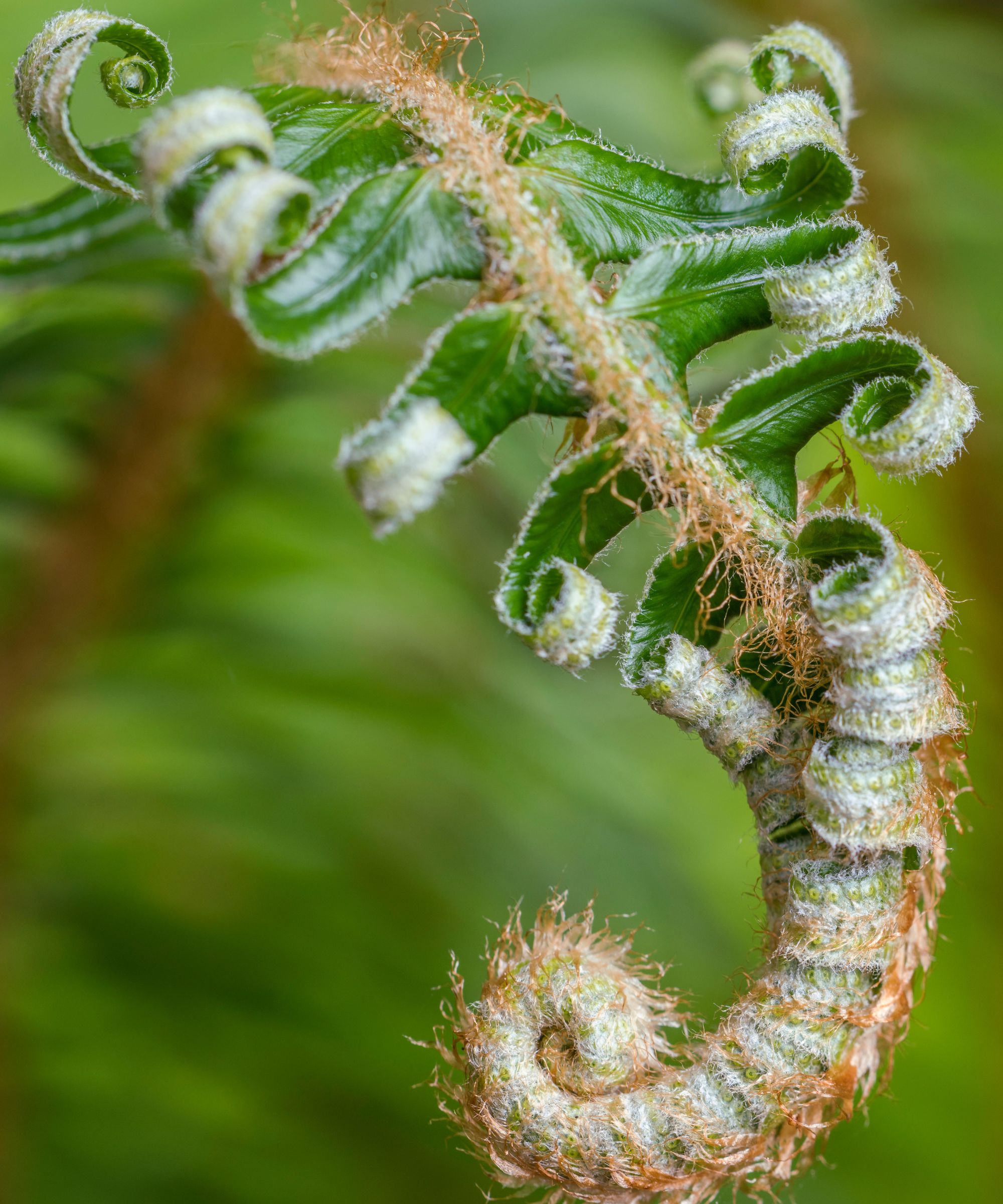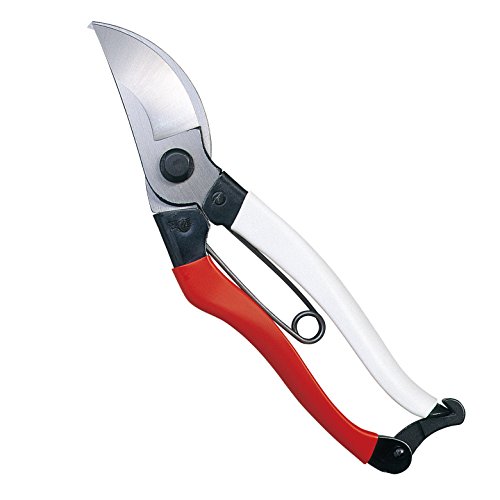Do you need to prune ferns? Expert gardeners say yes, plus when and how to do it
Knowing when to prune ferns keeps them healthy and looking at their best


Ferns are truly ancient specimens that nowadays make fantastic low-maintenance perennial plants for backyards. There are thousands of species of evergreen and deciduous types and fern fronds are a spectacular sight as they unfurl.
Growing ferns is ideal if you have shadier spots in your backyard. The plants add beautiful form and texture to borders and containers, or trickier spots like under trees or darker corners. Their beauty can be affected by brown or dying fronds, however, taking time to prune ferns keeps them looking at their finest.
Cutting back ferns is simple. The key is understanding the type of fern to prune at the right time of year, plus taking care not to damage any young fronds when you cut. Our guide looks at when and how to prune ferns to ensure you cut successfully and have healthy plants.

Do you prune ferns?
Whether to prune ferns or not is a common question. Fern expert Richie Steffen wrote for the Hardy Fern Foundation that cutting back ferns is ‘purely for aesthetics’ and added that ‘ferns have managed for millions of years without being cut back by someone’. For most varieties of ferns, the old fronds simply fall to the ground and biodegrade naturally.
However, there are real benefits to pruning ferns when you have them in a backyard. Firstly, it neatens the fern by removing the old ragged and dying fronds. It also gives space for new fronds to develop without any obstruction and improves air circulation to keep the fern healthy.
So, should you prune ferns? If you have ferns as part of your garden ideas they certainly benefit from trimming. Ferns can exist in woodlands and forests without pruning perfectly fine, but, in a garden, they should be at their best year-round. If you prune ferns you can enjoy seeing new fronds unfurling, rather than brown, tattered fronds, and have healthy, thriving plants.
Bearing that in mind, let’s take a look at when and how to prune ferns.
When to prune ferns

There are over 10,000 different species of ferns worldwide and the ideal time to prune ferns will depend on certain factors. These include whether it is evergreen, deciduous, or winter-green, the characteristics of any specific cultivar, and your US hardiness zone.
If you’re wondering when to cut back ferns, the simplest way to know you are cutting them back at the right time of year is to follow these basic guidelines based on the type of fern.
The foliage of deciduous ferns starts to die back once the temperatures drop in late fall or early winter. Prune deciduous ferns back once the fronds turn yellow and brown in fall to neaten the plant.
Evergreen species of ferns are fantastic plants for a woodland garden as they remain green throughout winter. However, that does not mean you do not need to cut back these ferns. New fronds will start to grow in early spring and it is beneficial to remove any brown or damaged fronds in late winter or early spring before the new ones appear.
Winter-green ferns are deciduous types that remain dormant in summer and grow in fall and winter. For these unique, and uncommon, types of fern, Tammy Sons, an experienced horticulturist and founder of TN Nursery, recommends: ‘For winter-green ferns, you should cut back in late spring or early summer when the leaves turn yellow and brown.’
It is important to know your ferns, to avoid confusing winter-green ferns for evergreen ferns and making the pruning mistake of cutting them back in late winter.

Tammy Sons has decades of experience in horticulture. She is the founder and CEO of TN Nursery, which is recognized as the go-to place for some of the world's largest brands.
How to prune ferns

The process of pruning ferns is quick and simple. It is important to have clean and sharp pruning shears to avoid damaging the plant or spreading diseases around the backyard. Once you have clean garden tools, there are simply a few steps to prune ferns successfully.
- Check the type of fern to ensure you are pruning at the right time of year.
- Identify any dead or dying ferns - will be yellow or brown - and ones that are looking that are messy and are best removed
- Cut these old fronds at the base, cutting close to the crown but taking care not to damage any new fronds
- Remove all the cut fronds and use them to make compost if they are disease-free
- Avoid trimming any fronds in half to try to shape the plant as the tips will turn brown and unattractive
Ferns will benefit from mulching with leaf mold or compost after pruning to retain moisture in the soil, suppress weeds, and add nutrients, but keep the mulch away from the base of the fern.
Shop pruning shears

A pair of light and sharp Japanese pruning shears with steel blades that glide through stems and bright handles to spot amongst foliage if you drop them.

These pruners are stronger than others with blades made from drop-forged Japanese carbon steel to easily and effectively slice through stems.

Felco No. 2 pruners are often hailed as the best pruners you can get. It is understandable why, as they are comfortable, hard-wearing, razor-sharp, and every part can be replaced.
FAQs
What happens if you don't cut back ferns?
Fern fronds will drop from the plant and break down over time if not cut manually. The old and biodegrading frons can look messy in a backyard and sometimes affect new fronds as they start to unfurl.
Should I cut off the brown parts of my fern?
It is beneficial to cut off brown leaves and remove dead fronds from ferns. A fern turning brown can be a natural part of it’s process, however, mass numbers of brown leaves can indicate issues with watering, pests, or diseases. It is recommended to remove brown fronds to keep the plant healthy and attractive.
Ferns are renowned for being some of the best shade plants you can get for those tricky areas of the backyard. But some are better than others at different light levels. Our guide to the best ferns for shade showcases eight of the top varieties for the shadiest spots.
Sign up to the Homes & Gardens newsletter
Design expertise in your inbox – from inspiring decorating ideas and beautiful celebrity homes to practical gardening advice and shopping round-ups.

Drew’s passion for gardening started with growing vegetables and salad in raised beds in a small urban terrace garden. He has worked as a professional gardener in historic gardens and specialises in growing vegetables, fruit, herbs, and cut flowers as a kitchen gardener. That passion for growing extends to being an allotmenteer, garden blogger, and producing how-to gardening guides for websites. Drew was shortlisted for the New Talent of the Year award at the 2023 Garden Media Guild Awards.
-
 Plants never to grow next to fruit trees
Plants never to grow next to fruit treesExpert advice on which plants to keep away from fruit trees to encourage a healthy harvest
By Jacky Parker Published
-
 Martha Stewart's tips for arranging daffodils are unbelievably simple and effective – it's the only flower advice you need this springtime
Martha Stewart's tips for arranging daffodils are unbelievably simple and effective – it's the only flower advice you need this springtimeMartha shows us that we can create gorgeous bouquets of this seasonal flower by simply trimming the stems and placing them in specific vases
By Hannah Ziegler Published
-
 How to coppice trees and shrubs – and the 5 species that will benefit from this historical and super simple pruning technique
How to coppice trees and shrubs – and the 5 species that will benefit from this historical and super simple pruning techniqueCoppicing has aesthetic and practical benefits in a garden
By Drew Swainston Published
-
 Horticulturists urge you to prune these 7 plants in April – for healthy growth and better-than-ever flowering displays
Horticulturists urge you to prune these 7 plants in April – for healthy growth and better-than-ever flowering displaysDiscover a key selection of plants to cut back this month, with expert pruning advice
By Drew Swainston Published
-
 Safety is the number one reason to prune a cottonwood tree – an arborist reveals the best trimming routine to follow
Safety is the number one reason to prune a cottonwood tree – an arborist reveals the best trimming routine to followWhen and how to prune young and established cottonwoods
By Drew Swainston Published
-
 Now is the time to prune hawthorn trees to keep them healthy and attractive – 5 expert-recommended steps to follow for proper trimming
Now is the time to prune hawthorn trees to keep them healthy and attractive – 5 expert-recommended steps to follow for proper trimmingAvoid unnecessarily stressing your trees by pruning at the right time and not getting carried away
By Drew Swainston Published
-
 This is your last chance to prune oak trees to avoid a potentially fatal disease that can kill trees within months, arborists reveal
This is your last chance to prune oak trees to avoid a potentially fatal disease that can kill trees within months, arborists revealStay safe and discover what you can prune at different times of the year
By Drew Swainston Published
-
 Expert horticulturists reveal 5 clematis pruning mistakes to avoid if you want spectacular floral displays
Expert horticulturists reveal 5 clematis pruning mistakes to avoid if you want spectacular floral displaysWhy you need to prune at the right time and not remove too much or too little
By Drew Swainston Published
-
 How to prune birch trees – arborists reveal 5 golden rules to follow and 3 things you should never do
How to prune birch trees – arborists reveal 5 golden rules to follow and 3 things you should never doAggressive pruning can be fatal to birch trees – here is how to avoid it
By Drew Swainston Published
-
 There's still time to prune deciduous trees this month – expert trimming advice for 9 of the most popular backyard trees
There's still time to prune deciduous trees this month – expert trimming advice for 9 of the most popular backyard treesThese trees will benefit from pruning in February with our handy guide
By Drew Swainston Published